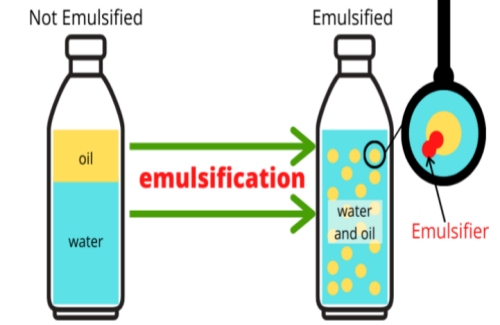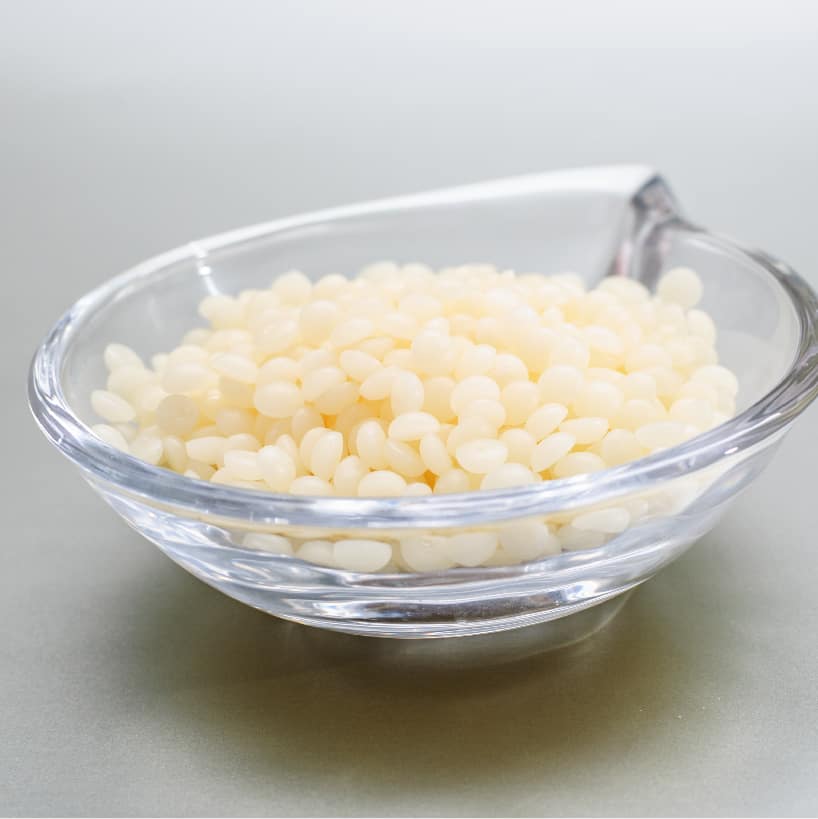Emulsifier In Food for Restaurants: Advanced Strategies
Discover Just How an Emulsifier in Food Can Assist Achieve Flawlessly Combined Recipes Each Time
Emulsifiers are essential components in the culinary globe, enabling the blending of oil and water-based components. Their ability to minimize surface area tension permits for the production of secure mixtures, boosting both appearance and taste in various dishes. Understanding exactly how these substances feature can change the method one approaches cooking. Yet, several remain uninformed of the different types of emulsifiers and their details applications. Exploring this subject exposes beneficial insights for attaining culinary perfection.
What Are Emulsifiers and Exactly How Do They Function?
Emulsifiers play a crucial duty in the food market by allowing the stable mixing of active ingredients that typically do not combine, such as oil and water. These substances have both hydrophilic (water-attracting) and hydrophobic (water-repelling) properties, permitting them to communicate with both types of ingredients. When an emulsifier is added to a mix, it lowers the surface area stress in between the oil and water, helping with the formation of small droplets of one liquid distributed within the other. This procedure produces a stable emulsion, protecting against splitting up over time and boosting texture and mouthfeel. Emulsifiers are fundamental in various food, from salad dressings to gelato, making certain uniformity and quality. They additionally add to the general sensory experience of food, affecting flavor launch and visual allure. Understanding how emulsifiers function is necessary for food scientists and chefs alike, as they seek to produce well balanced and pleasurable cooking experiences.
Common Types of Emulsifiers Made Use Of in Cooking
Numerous types of emulsifiers are made use of in food preparation to accomplish wanted textures and security in different food. Usual emulsifiers consist of lecithin, which is normally located in egg yolks and soybeans, and is widely used in mayo and dressings. One more widespread emulsifier is mustard, which consists of substances that aid mix oil and water in sauces.
Additionally, business emulsifiers such as mono- and diglycerides are usually contributed to refined foods to improve their stability and improve service life. Starch-based emulsifiers, stemmed from corn or potatoes, are also utilized in gravies and puddings for thickening and structure. Finally, casein, a milk healthy protein, serves as an emulsifying agent in milk items like cheese and cream. Each of these emulsifiers plays a crucial duty in making sure that active ingredients mix effortlessly, giving the desired consistency and flavor in cooking productions.
The Science Behind Emulsification

The security of an emulsion relies upon the balance in between the forces acting upon the distributed droplets. If the beads coalesce, the solution can break, resulting in splitting up. Various elements, such as temperature level, concentration of the emulsifier, and the approach visit this site of mixing, affect the success of emulsification. Understanding this clinical foundation is important for accomplishing constant cause culinary applications including emulsions.
Tips for Utilizing Emulsifiers in Your Recipes
When integrating emulsifiers into dishes, cautious factor to consider of their properties and performance can significantly enhance the end product. One must pick the suitable emulsifier based on the wanted texture and stability of the dish. Usual alternatives consist of egg, mustard, and lecithin yolks, each offering special advantages
It's necessary to additional info understand the temperature at which the emulsifier works best; as an example, some emulsifiers work properly at room temperature, while others call for heat. Progressively including oil to the emulsifier while blending can help create a steady solution.
In addition, the proportion of emulsifier to fluid is vital; inadequate may result in splitting up, while excessive can create an unfavorable texture. Ultimately, proper storage problems must be taken into consideration, as some emulsified items may call for refrigeration to maintain security and freshness. By following these tips, cooks can achieve constantly well-blended recipes.

Delicious Recipes Featuring Emulsifiers
While lots of cooks may not understand it, incorporating emulsifiers into recipes can boost meals to new heights of flavor and appearance. A classic vinaigrette advantages substantially from the enhancement of mustard, which acts as an emulsifier, supplying a smooth consistency that binds oil and vinegar perfectly. Similarly, homemade mayo showcases the power of egg yolks, producing a luscious, lavish sauce perfect for salads and sandwiches.
In cooking, emulsifiers like lecithin can assist accomplish a tender crumb in muffins and cakes, enhancing moisture retention. A rich chocolate ganache, made with hefty lotion and delicious chocolate, can also incorporate an emulsifier to keep a silky coating. Additionally, ice creams typically utilize emulsifiers to ensure a creamy appearance and prevent ice crystal formation, causing a wonderful treat experience. By integrating these emulsifying representatives, chefs can produce dishes that delight the taste and supply try this website a satisfying mouthfeel.
Regularly Asked Concerns
Are Emulsifiers Safe for People With Food Allergies?
Emulsifiers can be risk-free for people with food allergic reactions, depending on the specific emulsifier utilized. Cross-reactivity and private level of sensitivities differ; as a result, consulting a medical care professional is recommended to ensure safety.
Can I Make My Very Own Emulsifier in your home?
Yes, people can develop homemade emulsifiers making use of ingredients like egg yolks, mustard, or honey. These natural choices can properly blend oils and water-based components, offering a simple option for numerous cooking applications.
Just How Do Emulsifiers Impact the Nutritional Value of Food?
Emulsifiers can boost the dietary value of food by boosting nutrient absorption and security. Excessive usage may lead to negative impacts, potentially modifying digestion processes and influencing digestive tract health and wellness in delicate people.
Exist Any Type Of Unfavorable Side Impacts of Consuming Emulsifiers?
Some research studies suggest that taking in emulsifiers might bring about gastrointestinal problems or interrupt intestine microbiota equilibrium. However, further research study is essential to completely comprehend their lasting effects on health and wellness and possible negative adverse effects.
Can Emulsifiers Adjustment the Taste of My Recipes?
Emulsifiers can subtly change the taste account of dishes. By enhancing structure and mouthfeel, they might make tastes much more noticable or well balanced, but they normally do not convey solid tastes by themselves.
Emulsifiers play a vital function in the food sector by enabling the secure blending of components that normally do not integrate, such as oil and water. Various types of emulsifiers are made use of in food preparation to accomplish desired textures and security in numerous food items. Furthermore, commercial emulsifiers such as mono- and diglycerides are frequently added to processed foods to boost their stability and improve rack life. It's important to understand the temperature level at which the emulsifier works best; for circumstances, some emulsifiers function efficiently at area temperature level, while others require warmth (Emulsifier In Food). Emulsifiers can be risk-free for individuals with food allergies, depending on the specific emulsifier utilized